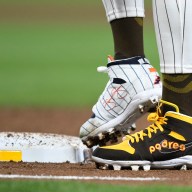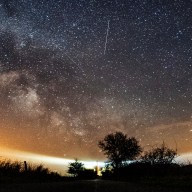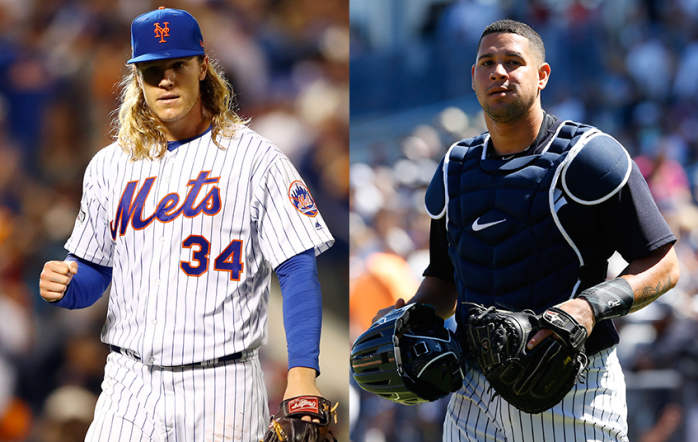Ever wondered if silent-but-deadly farts are truly worse than loud farts? Or if the five second rule holds true? Enter the AsapSCIENCE guys Mitchell Moffit and Greg Brown, science myth busters who have nearly 4 million subscribers on YouTube. Moffit and Brown answer your most pressing questions, like “What Color is this Dress?” with scientific explanations. We caught up with the AsapSCIENCE guys at YouTube studios and talked to them about their new book, “AsapSCIENCE: Answers to the World’s Weirdest Questions, Most Persistent Rumors, and Unexplained Phenomena,” their favorite videos and of course, the dress. I know you two went to college together, but how did you come up with the idea to do this and create a YouTube channel?
Brown: After graduating from university, where we met, we went through the usual crisis of figuring out “what do we do.” And I went to teachers college because I knew I wanted to be a teacher, so I started to learn a lot about how education is changing and how important YouTube was to kids. It was pretty amazing to see. And then Mitch was starting to learn a lot about YouTube as a medium and we thought as a way to stay motivated and interested in science, “let’s do it for ourselves.” So we decided to make one video a week for a year, see what happens and at that point we really didn’t have any expectations at all. How did you first gain traction as a YouTube channel?
Moffit: The first and second videos [to do well] were probably “The Scientific Hangover Cure.” That was the first viral video we had and then after that we had “The Scientific Power of Naps” and those taught us a lot about what types of content people consume and what’s interesting to them. How did you come up with the format? Brown: We knew we wanted the science to come first – we wanted it to be animated. We didn’t want to have our personalities in it because we wanted to ensure people were learning this thing before maybe judging us or caring about us. Visual learning is so important and we thought if we make a cartoon then people aren’t going to be as intimidated by it, which is a big issue with science. What did you two major in? Moffit: Biological science.
Brown: But I also majored in studio art so that gave me the confidence to draw.
Moffit: And he has a teaching degree and taught high school.
Brown: Yeah, I taught high school science.
What question do you get asked most? Moffit: We’ve answered most of them already so people don’t ask them anymore, but often anything to do with sleep or coffee.
Brown: Sleep, drugs, coffee.
Moffit: Alcohol.
What have your favorite videos been? Brown: Right now we’re drawing out the science of selfies and why we actually like mirror images versus photos of ourselves. And that’s in the book and I’ve slowly started to realize that that’s interesting. It’s so true; you’re so used to seeing your mirror image when you see yourself, you’re like, “What?” That’s one I really love now. Moffit: I guess I often go back to the example of the chicken or the egg. Over time, it’s proven to be such a compelling question that everyone’s curious about and it sparks a lot of debate and it’s an age-old relatable thing that everyone talks about. There wasn’t a specific answer. It was putting a narrative together to tell a story as an excuse to talk about evolution. Do you usually know the answers to the questions already?
Brown: We do the research every time and that’s an important thing that we want people to know because we don’t – we realize science is fluid and we don’t have all the answers.
Moffit: We started a second channel with our personalities in it in the hopes of showing that we’re learning too we just put a lot of research into this. Some things we have some knowledge because of school or because we’ve looked into it before but overall for every episode. We spend hours and days working and researching papers to put together an episode. Why did “the dress” explode so much? Why were people so crazy about this dress? Brown: That was exciting for us because we really wanted science to get more involved with pop culture. People started asking us and we realized, “This is our calling. The world is talking about science.” But why do you think it went so viral? It has to be the most viral phenomenon that happened in the past few months.
Moffit: We often say the best videos the most popular videos are based on experience. We have one called “How old are your ears?” and it’s all about hearing the tones and based on your age, you probably don’t hear it at a certain point. People can share that with their friends and discuss it with their friends. You think it’s a participatory thing? Moffit: Yeah and you have to share it. We didn’t believe that dress when we first saw it and then our roommate commented on it and we were just like, “What?! You see gold and white?” We were seeing black and blue. At first, we were like, “We don’t get it; is this real?” and then it took us having that moment of something with somebody else and it just snowballed from there.


















